These are the 3 holes that destroy most golfers’ rounds—and they’re the ones you think are easiest.
In this video, I’ll show you how to stop playing hero golf on:
• Short par 3s (where flag-hunting leads to doubles)
• Short par 4s (where driver gets you into trouble)
• Par 5s (where going for it in two is almost never the play)
I’ll walk you through the decisions using the SwingWise system:
✅ Wise Zone target selection
✅ Plays Like Distance (wind, slope, lie)
✅ Dispersion-aware club selection
✅ Mental game discipline
This is Golf Theory Optimal strategy. It’s not about perfect swings—it’s about smart shot planning.
👉 Download the SwingWise app now and lower your scores with every round:
https://apps.apple.com/us/app/swingwise-the-golf-guidance/id6743229292
🎯 Want to break 80 or 90? Watch these next:
▶️ How to Break 80 with a perfect plan
▶️ 5 Tips to Break 90 Without Changing Your Swing –
https://youtu.be/yTTM5NSOYeU
#golfstrategy #break80 #break90 #swingwise #coursemanagement #golftips #smartgolf
So, everyone thinks short holes are easy, right? Par three, under 140, time to pin hunt. Short par four, blast driver. Short par five, got to go for it in two. But here’s the truth. These are the biggest scorecard records. Not because of your swing, but because of your bad strategy. Today, I’m showing you how to play smarter golf on each of these holes using real course management, real data, and the Swingwise rangefinder to avoid mistakes and play percentages. Let’s hop into it. This is the classic trap. A short par three tucked in the front of the green. You have got a wedge in your hand and you’re thinking birdie, maybe even sticking it close. But here’s the truth. This is where double bogeies are born. Shortsighting yourself, missing long, chunking in the bunker. Let me show you how to play this smart, not perfect, by aiming for the wise zone and playing the right shot for your dispersion. We got an example of a short par three here. It’s about 124 where it is in the bowl. It’s one of the better pin positions on this hole. But, you know, from a club perspective, so the pin is like 124, 123. That’s kind of the top end of this club. So, I’m going to try and get it close cuz it’s a short par three. So, I’m going to hit my 50°. Let’s see where we go. Pretty much right at it. Get up. Get up. Oh, just short. And in hindsight, if I was playing it correctly, probably hit my gap wedge, which goes more like 130. So I have a little bit of a cushion. Normally from a golf course strategy perspective, I wouldn’t want to hit something that just maxes out to get to that front pin because you come up short like I did. So let’s see what we do with the gap wedge. It’s 124. Aiming right at that tree behind it, the green swale will bring it back to the hole. Get in. Get in. Say the gap wedge was the right play. Enough club to get there. Probably doesn’t look like it on camera, but what is like a little bit shorter back swing? That’s kind of how I can take something off, but I still have that same force coming down. I think we’re going to have a tap in for birdie. Tweet tweet, boys. All right, so we hit the club that we knew would get here and we’ve got about 18 in for tweet tweet tweet tweet mother truck. Jen loves that. I kind of like it too. All right, so the the white ball we hit when we’re trying to take the aggressive, you know, full out 50° came up a little short. Got pretty crappy lie right here and we’ve got about 8 ft 7 ft of grass to cover before we get on the surface. So, I’m going to have to hit kind of a jabby little pop it out shot and hopefully uh time the force so that we can trickle on up there close. It’s not too bad considering the lie since we can’t make it. So, we got about 5 ft. Going to go a little left to right. Play on the outside left lipoo. didn’t come back all the way. By hitting a more aggressive shot with a club that would reach to, you know, maybe a yard short of where the pin is, we ended up coming like six yards up short. We hit it pretty good, but too high and I think some wind might have caught it. Then we had a bad lie. You know, cost us making an easy par, making an easy bogey. But on that type of hole, if you just have a front pin, make sure you hit something that’s going to go past the front pin by like 5 yards, maybe even 10, depending on where your contact is with your game, just because that extra cushion, assuming, you know, 10 yards past the pin isn’t in water or something. I don’t think you could have a configuration that tight. So anyway, if it’s the front pin, you know, pretty much play a number or play a club that’s going to go to the middle of the green. That way, you have a bigger chance of hitting the fat part of the green, making your par, and going on to the next hole. As we saw, got lucky and hit it to like 16 inches or 18 inches and made birdie. Let’s go to the next one. You step onto a short par4 and instinct takes over. Driver in hand, thinking I can drive this green, but look closer. There’s a tight landing zone. Fairway bunkers maybe OB left. This whole punishes big dispersion even if it’s short. I’ll show you how to pick the longest club that fits and how swingwise helps you visualize that smart target. We’re here at the short par4. Can’t really see it, but there’s bunkers. It’s a split fairway to start and then there’s a waist area to get over. The waist area is not really a problem. That’s like I don’t know 120 yards to get over that or 130. If you go down the left side of the split fairway, you’ve got a series of four bunkers plus a green side bunker going all the way there from about 120 in. From about 120 to 60 in, you have another two or three bunkers on the right. There’s not much opening there. And then the aperture to get onto the green if you’re short and trying to run it up is only about 20 yards wide. So what I like to do is there’s a in the right fairway there’s a big area that’s called the boneyard cuz some guy named Bones used to hit it in there all the time. But it’s a big area. You’re in the short grass and you have a complete view of the green for your next shot. Whether the pin is on the right side of the green or the left side of the green, it’s just an easier shot to have on your second one. It’s just a 3-wood to get there. So, that’s, you know, another plus that I’m hitting a 3-wood. I’m not trying to fit a driver into a small landing zone. And the dispersion area is plenty wide for a 3-wood. Playing the hole the right way. I’m going to hit a 3-wood. And I’m going to try and aim just right of that mound about 10 yards. If I don’t clear it, it’ll funnel down into the fairway. Let’s hit the 3-wood. Put ourselves in good position for the next shot. Right. Is that not where I said I was going to hit it? And now for the aggressive shot. The pin is in the back left. It’s kind of in line with that red tip bush, the furthest one out to the closest to the fairway. So, I’m going to try and hit something along that line and see if I can’t carry it and get it on the front left part of the green. So, to do that, I’m going to hit my driver. So, I want to hit it higher, carry more of the uh terrain up there because there’s a bunch of bunkers and danger areas. So, let’s see what we can do here. And I would say this is like a shot that I can pull off about maybe two to three times out of 10. So not a high percentage, 20 to 30 when I can easily play it out to the right with a 3-wood. So let’s see how we do with the ultra aggressive strategy here, which is by the way most golfers would do. Like, oh, I can get it there. It’s only 288. Probably cuz I was trying to get it there. Swung a little bit too hard and I didn’t have the best contact. I think I saw it bouncing over there to the left, but it’s probably bounced into a bunker. Let’s go see where they’re at. See which strategy makes more sense on a hole like this. All right, so what we feared could happen happened. I kind of drop kicked the driver. didn’t really give it a good enough chance contactwise cuz I was trying to hit it hard enough to carry all this stuff and I saw b and it just ended up in this bunker. I don’t know if you can see. I think there’s one, two, three, four bunkers here and then there’s three bunkers on the other side. And if Jen, you show them up there, there’s only like 10 or 15 yards to squeak it on the green on the ground. And now we’ve left ourselves with a very difficult like 35 36 yard sand. And still have to go up over this. I’m going to hit my 54 and open it up. I do have a 58, but it doesn’t have as much bounce as this. So, I want to make sure I have the club with more bounce. I don’t think it’ll be a problem getting over. That’s the other reason I want to hit the 54 is I don’t know if the 58 would carry far enough. So, going to open up the 54 a little. See if we can’t get this on the green still. Just really not the shot you want to have on a 288 yard par4 coming into the green. All right. I’d say that’s better than I expected, Jen. But like if you scored it like Olympic judge would for gymnastics or something, this is like a a level 10 or something shot instead of like the shot we’ll see with the yellow ball over there, which is probably like a top like one or 5% of shots you’d want to have into the hole. All right, so this is where the shot ended up. I hit the way I would from a normal golf course strategy perspective. Got plenty of fairway over here. I got a good lie. You know, I’m just a little short of the green. Probably got about 65 70 yards here. I’m going to hit kind of a low flight at kind of pitch with my 50°. Try and land it about, you know, 15 ft short of the hole and let it roll back. Really don’t want to fly it too much further than 15 ft short cuz it might go over the green. And as far as shots go, I think comparatively everybody that’s watching this would rather hit this shot than that other shot out of the bunker. I did end up getting a really good shot, but it’s on the green and it’s about I don’t know 30 feet away. So, let’s see what we can do from the position A over here. See if we can hold it out. All right. Flew that further than I wanted to, but it checked right away. So, I think we’re exactly about pin high. Maybe what do you think? 8 to 10 ft. Maybe 12. So, the good thing is it’s an uphill putt. It does kind of crest and then go downhill a little bit at the end. It’s going to go left to right. Going to play it like three cups out to the left or actually maybe one and a half I think is better. I have made this putt before. Can’t remember if it was in one of the videos or in a round out here. But anyways, we got a comfy par here. I’d say though the stress on trying to hit that shot out of the trap took about two years off my life. But, you know, no harm, no foul. Still doesn’t mean it’s the highest percentage way to play the hole. Now, let’s go over to the other ball that we were playing the safe, not the I shouldn’t say safe way, the optimal way for me to play the hole based off of my yardage. If I hit my driver, carry it another 20 yards, maybe that’s still that would be the shot. I have to hit a perfect drive to carry all that stuff. So, it’s really not the smart shot. And what we’re trying to teach everybody here is just think before you walk up to the T- box. Just cuz it’s a short par4, don’t immediately go grab your driver and try and hit the green. You got to like look at what surrounds the green and see what kind of trouble you might get in. This is the optimal route for me. I can hit that, you know, 60 70 yard shot pretty decent. So, let’s see if we can make it make a tweet tweet. I think it’s going to go just slightly to the right. I’m just going to aim left side of the hole. Tweet tweet mother trucker. And that is why you play it the optimal way instead of trying to navigate through seven, eight bunkers and a 20 yard aperture where your ball is going to and or where your ball is going to land. Reachable parfs. This is the moment you’re in the fairway of a par five and you’ve got 240 in. You want to go for it. You can feel it. But here’s what most golfers miss. The lie, the wind, the cover distance. It all adds up. Going forward in two is often a coin flip and a bad one at that. Let me show you how to make a smarter play based on real data. We reach a good example of a par five and how people misplay them. Typically amateurs see that it’s a hole that’s like even if it’s a short par five like this one only plays probably like 460 from here. They get real anxious. They’re going to think they’re going to hit a great drive and get on in two. So, we’re going to show you how this is probably not the right club because the fairway narrow is so much where it’s going to land and I’d probably be better off playing it another way. But here we go. I’m going to play it the wrong way. I’m going to try and thread the needle with my driver on this one. So, I don’t know if that stayed in or not. I guess we’ll find out when we get up there. Now, if I was playing this the correct way, I would just take my fivewood, aim towards that the tallest part of that pine tree way off in the distance. Just try and make sure I find the fairway. And there’s still a possibility I’d be able to go for it in two if I hit the fairway. Going to try and hit a nice little straight fivewood down there about 225. Be at the top of the plateau. Oh god. We hit directionally. Not very good shot, but since we hit the right club, we didn’t go over the ravine. kind of shows that it’s still the right shot to play because I’m still positioned to play the hole and get on in three and see if I can’t make a birdie the oldfashioned way. So, I’m going to take a pitching wedge. I’m just going to try and hit it over the right edge of the tree. Get it down there to hopefully like 120 yards, 130 yards away from the the flag. Pretty good, Jen. Right over the tree. We should have a good shot in the middle of the fairway coming up. All right. So, we hit what we thought was a really good drive, but as you can see from the contours here, there’s a lot of bumps and moguls and it’s only about 20 to 25 yards of fairway here where it narrows. So, where I thought I was going to be in the middle and everything kind of slopes this way, I’m here in the rough sidehill lie. And since I hit the driver, I’m going to go ahead and try and go for it. I’ve got 192 to the pin. I’m going to hit a sixiron. I’m going to aim way right of the pin based off this lie that I have. And I’m going to try and uh see if I can’t get it back there close. Oh Get out. Think I hit it bad enough for the perfect layup. But I think the point here is is I took the risk of hitting the driver. Wasn’t when I thought I hit a perfect shot in the fairway and then I had that kind of crappy lie and then I’m like we got less than 200 to the green. Really only have to clear like 160. So I figure the sixiron, one of my favorite clubs, is a good choice. But based off that line stuff, even though I hit the driver, I probably should have laid up anyway. Just kind of showing you like it’s not always best to try and go as far as possible on every shot. All right, we got 138 to the flag. I’m going to hit something about 132ish, 135. So, we’ll hit our pitching wedge. Just don’t want to go past the pin. So, let’s see what we can do. Trying to hit it about 132, 133. Pretty much a stock regular pitching wedge. That’s going to be pretty good. All right. Probably around 20 25 ft for birdie. Go hit the uh how not to play it ball up there that we laid up so delicately before the river or the uh creek. All right. Back to the ball where we played driver off the tea box when I really wouldn’t recommend it. You can see I hit a really bad shot on the second one, but not bad enough to get in the creek. So, it looks like we have a perfect layup. Got about 60 yards. I’m going to hit a 58°. try and be a little aggressive with it just cuz it’s in this rough right here and I don’t want it to come out fluffy. So, I’m just going to take kind of a 2/3 kind of swing and see how close I can get it. And it came out fluffy, Jen. And we went into the swale. But we got a birdie putt. Not the end of the world. I think it’s kind of showing you like the advantage I had was if I was able to stay in that fairway, which narrows like 20 yards off the tee for me. It’s why I wouldn’t normally hit a driver on that shot. And then we’ve kind of hacked our way up onto the green. Definitely not the stress-free way to play the hole. All right, so back to the yellow ball, which is the one that we were playing smart with. We’ve got a about a 30ft putt for birdie. Got on in rag. See if we can’t get this in the circle of trust and go to the next hole. And we did. All right, stress-free pour. All right, back to the ball that played more aggressively. We’ve got a birdie putt about the same length, maybe a little bit closer, but we got this big swale to go up. Really like on the other one. Just trying to get it down in two. Go on to the next hole. All right, have a stressful little hard putt now. Not a problem. So made par on both balls, but I think even though we both resulted in pars. You could see that the yellow ball was a lot more relaxed, controlled. You know, we did have to get back into position after the T- shot a little, but it wasn’t like we were that far out of position cuz we strategically hit something that couldn’t go deep into the danger. Once I got it back in play, just was like a normal kind of par five that you’re playing in three shots. So, you be the judge, but I would believe you’re going to be more successful. play the whole 100 times doing it the way we did with the yellow ball where we laid up with the fivewood instead of hitting driver off the te. Hey guys, thanks for getting through the end of the video. I hope you found it enjoyable and you learned something today. The premise was, you know, short par threes, short par fours, and reachable par fives seem like easy birdies and holes you should score on, but if you’re not careful, they also can be easy blowup holes. If you use the swing wise system, we show your wise zone, which is the highest scoring percentage area to land your ball off the tea, and also where you should aim for your approach shots. And it bakes in cover distances, dispersion, elevation, and more to give you the right play, and not just the distance to the flag. If you made it this far, thank you. Like and subscribe. If you have any ideas or other content you’d like to see, we’re down to here, down to do it. Check out the app, Swingwise, at swingwise.ai to learn more about it. We have a free subscription sale going on. It’s the lowest entry point you’re ever going to get into it. Please check it out. There’s also a money back guarantee if you don’t like it before 30 days. So, kind of no risk. Hopefully, you can hit up the website and check it out. And if you like it, subscribe. And catch youall on the next one.


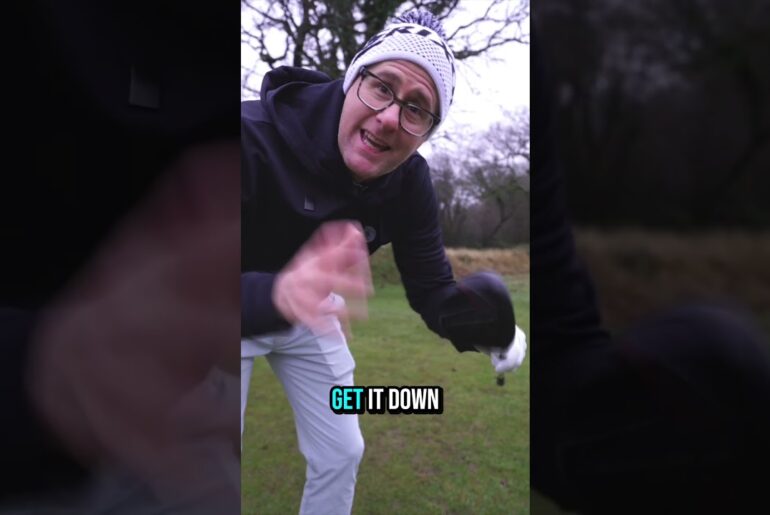
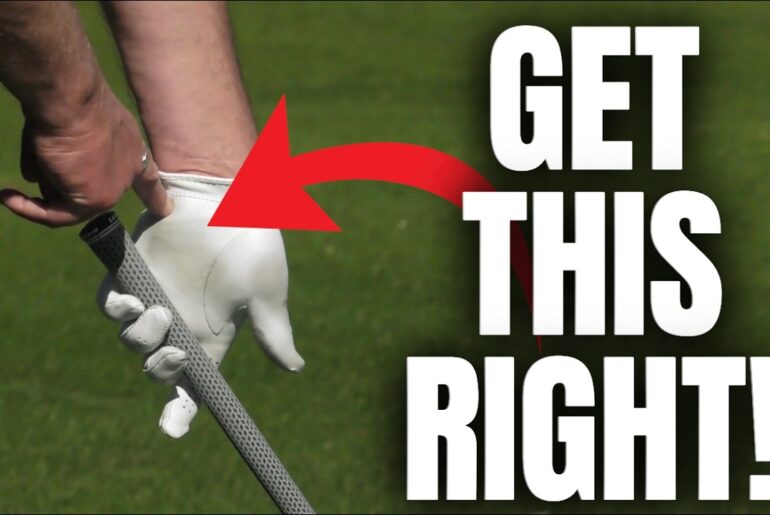
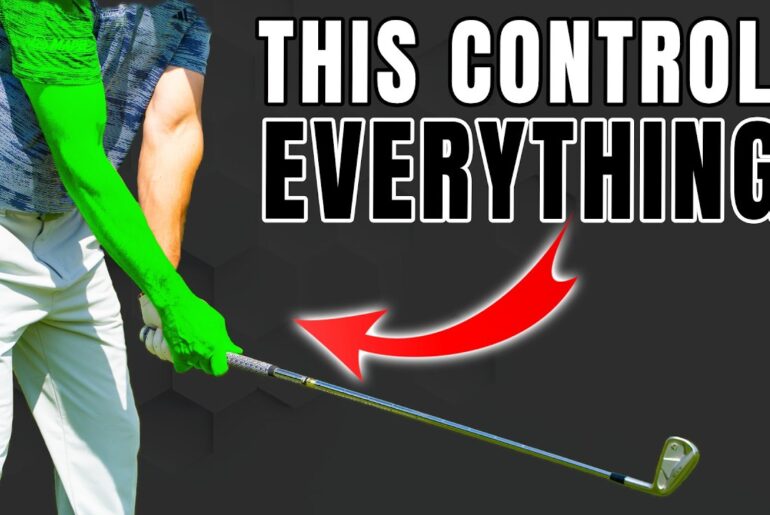
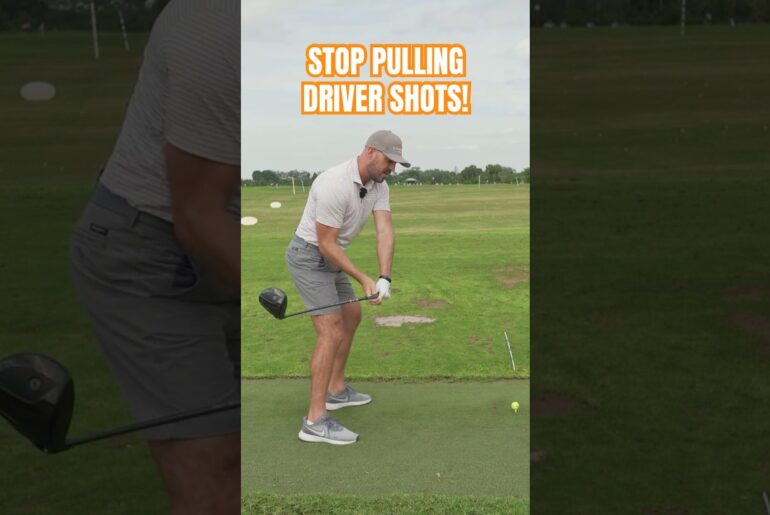
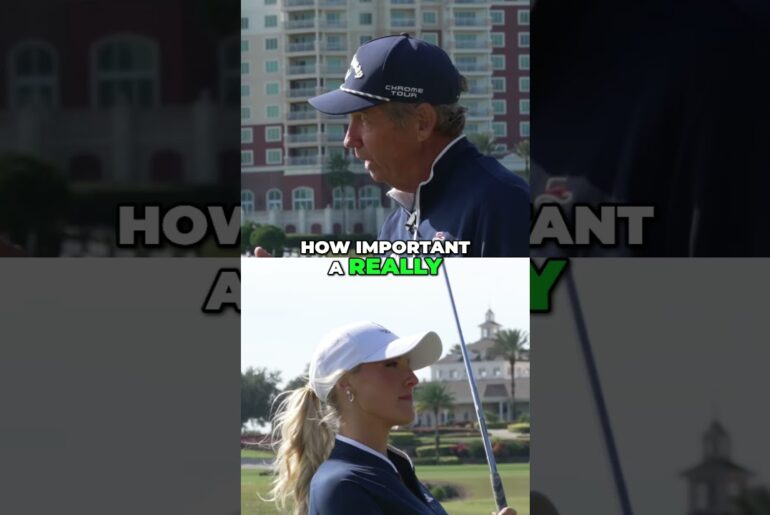

27 Comments
great advice – thanks !
Lost me with the third tweet tweet in 5 seconds and especially the words after the third one.
There's no need for all that. You have good advice. Let it stand on that.
Pretty dark out there
The three holes that ruin my game are Par 3's, Par 4's, and Par 5's.
Tweet tweet mother what??? 😅
What loft is your gap?
so you talk about using your 50 degree on the par 3 knowing that it is the max distance for that hole. You used it anyway, then used the gap wedge to hit center green. Why not just do that at the start. that would be the strategy, I dont need you to show how to hit short to a green I already know how to do that.
DO YOU FLY HOME ON THAT BRRROOOM STICK OF A PUTTER YOU GOT THERE??
The best way to improve is to not count all your strokes!
Isn't a 50 degree wedge a gap wedge? What is your pitching wedge?
You would be surprised how well you play, if you play all holes as par fives…..
First learn to spell strategy..😂
That par 5 with the hill is driver ALL DAY!!!
What? What did you share here that is useful?
50d and Gap wedge? What is the difference in yardage for mid to lower handicap? Maybe a difference with game improvement irons but not otherwise? Best advice for mid to high handicappers use the back of the green yardage!
I didn’t see much strategy. Just hit the ball within 18 inches of the pin on a par 3? Got it
I get it. Trying to use your exact number club often leaves you short sided.
Mostly agree with this except for the par 5. Dispersion with 5w and D isn’t that different (depending on the handicap). I’d much rather have a shorter club from the rough. Yea you mishit your 6i but you could have just as easily miss the layup— which is the worst feeling ever. I believe in the decade golf strat. The closer you are to the green, the more vertical the dispersion pattern. Meaning less left or right misses— it might lead to longer first putts but that’s usually better than a missed green
The how not to play it ball😅😅
My scores started getting much better when I upped my mulligan to 15 shots. 😂
Strategy* 0:17
Ahh! The art of stratagary!
It is spelled strategy…
"Tweet tweet muthafukka!" You earned yourself a new subscriber with that! Lbvs😂😂😂
My buddy has that putter supposedly normal humans can’t buy it 🤷🏼♂️ PGA only
It always cracks me up to see someone hit driver on a short par 4 and leave themselves with a 60 yard shot into the green…when they have no idea how to hit a 60 yard shot😂😂
I was watching until I saw his putter. Never taking tips from this guy